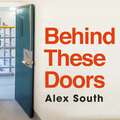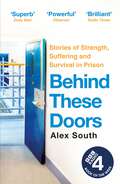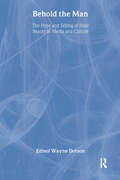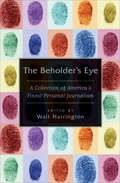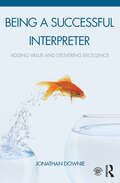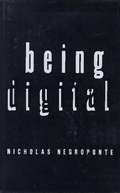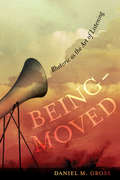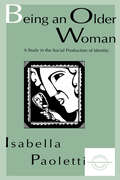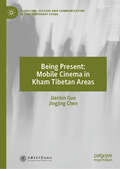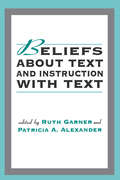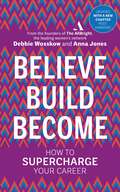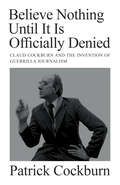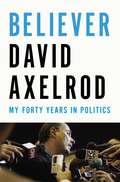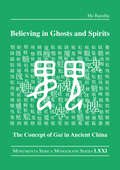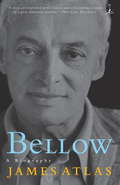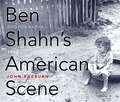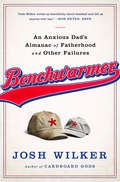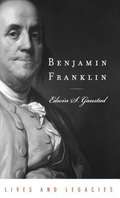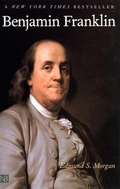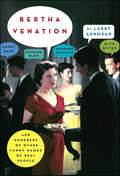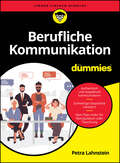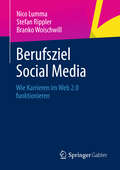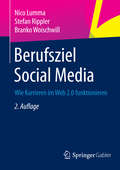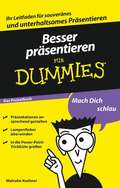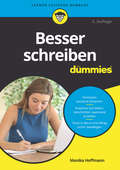- Table View
- List View
Behind these Doors: Stories of Strength, Suffering and Survival
by Alex SouthA powerful and affecting look at life in prisonThe men I have worked with and the staff I've worked alongside over the last ten years in prison have taught me strength, compassion, courage, and fundamentally, the need to talk, the need to share and the need to tell these stories. These are the stories of lives lived, lost and taken, behind walls so high we can pretend they hide another world entirely. But at what cost?__________Behind These Doors is a provocative, insightful and illuminating interrogation of what it is to live and to work in the UK's most infamous prisons. The individuals Alex introduces us to are, for the most part, living on the margins of society and the impact of the cycles of violence that so often accompany those lives is clear to see. Alex takes us by the hand, behind the gates and through security into prison cells, to the shared kitchens, the prison library, down the corridors and into the 'seg' (segregation unit); we will meet men who will surprise and shock us in equal measure, as well as prison officers who struggle to contain the challenges the job presents.This is a no holds barred depiction of life in prison and its many devastating and astonishing, and sometimes inspiring, consequences. As a woman in this environment, her perspective feels especially urgent.(P) 2023 Hodder & Stoughton Limited
Behind these Doors: Stories of Strength, Suffering and Survival
by Alex South*Out now: a powerful and affecting look at prison and the devastating impact it can have*'A true, compassionate and honest account of what it is to work in our prisons.' Dr Gwen Adshead, Sunday Times bestselling author of The Devil You Know'A vivid, unsentimental insight into a world that needs to be seen . . . a powerful reminder of how far we are from rehabilitating our prisons.' The Observer'This is a beautifully written account about hope and optimism, of humanity, realism, resilience and the complexity of people.' Professor David Wilson__________'The men I have worked with and the staff I've worked alongside over the last ten years in prison have taught me strength, compassion, courage, and fundamentally, the need to talk, the need to share and the need to tell these stories. These are the stories of lives lived, lost and taken, behind walls so high we can pretend they hide another world entirely. But at what cost?Few people leave prison unchanged. It's a place heavy with suffering, a place where you will find dangerous, vulnerable, and forgotten people. But for Alex South, it was a place where she also found hope.In this powerful and moving memoir, Alex attempts to make sense of her experiences in prison by confronting the harsh reality of life on the inside and examining them from different angles. In an overwhelmingly masculine environment, where strength and aggression are routinely on show, Alex's view is particularly important.Capturing the confusion and contradictions of prison, Alex presents a life that is often hidden from the public. Changing our perceptions, Behind These Doors shows the many devastating, but often inspiring, consequences prison can have.__________'I was completely gripped whilst reading it - it's such a powerful memoir and one that shines a light into a world most of the public rarely see.' Nikki Smith, author of The Beach Party
Behold the Man: The Hype and Selling of Male Beauty in Media and Culture
by Edisol DotsonThe first comprehensive study of how images of male beauty are projected onto society, Behold the Man: The Hype and Selling of Male Beauty in Media and Culture examines the role media and society play in creating the image of the idealized male. This book explores how these images are interpreted by all genders and sexual orientations in order to investigate the phenomenon’s effect on the self-esteem of adolescent and adult males. Behold the Man provides you with research and examples that identify this problem from many angles to help you realize that being a man is more than merely possessing muscles and good looks.Discussing examples in which both attractive men and women are idealized as “the norm,” Behold the Man argues that men are experiencing the same injustices as women--splashed on the covers of magazines and in advertisements, based on their sex appeal, sometimes to promote nothing more than their looks. Within Behold the Man, you‘ll find topics that relate to the reasons for and effects of male beauty standards, such as: aspects of male beauty, from Ancient Greek ideals to how it is visualized throughout history in art the vision of “the ideal male,” along with sexual connotations, in advertisements for clothing, cologne, sunglasses, automobiles, and shaving products the emphasis of strong, well-built males and their bodies in movies, music videos, and literature how men alter their bodies by dieting and cosmetic surgery to achieve the look found in advertisements today’s growing numbers of male eating disorders caused by the notion that only good-looking, muscular men are acceptable reasons behind the exploitation of the male body and the double standards for male beauty found within gay male communities how advertisers and authors faithfully follow the “bigger is better” theory--from pectoral and bicep muscles to penis sizeRecognizing how society has created and changed the appearance of the ideal male, this text explains to you the danger men of all ages face who feel they need to be physically handsome to be desirable. From Behold the Man, you’ll learn about the real messages of advertising and media, the problems they cause, and that true self-worth cannot be measured by physical attributes.
The Beholder's Eye: A Collection of America's Finest Personal Journalism
by Scott Anderson Harry Crews Mary Kay BlakelyA collection of the very best in contemporary first-person journalism compiled by the award-winning former Washington Post reporter and author.Great journalists, at one time or another, have all been characters in their own stories: people with personalities that shaped what they saw and reported, and were touched and changed by the experiences about which they wrote; and innovators who borrowed the storytelling techniques of fiction. The Beholder’s Eye showcases the very best of an increasing trend toward personal narrative: Mike Sager stalking Marlon Brando in the Tahitian jungle; J. R. Moehringer’s quest to discover the true identity of an old boxer; Bill Plaschke’s story about a woman with cerebral palsy who runs an obscure Los Angeles Dodgers Web site; Scott Anderson’s story of his lifetime of covering war after war; Harrington’s own tale of his interracial family’s struggle to persevere; and many others. Written by reporters who were willing to reveal themselves in order to bring readers insights that were deeper than supposedly objective third-person stories, their articles are an invaluable resource for aspiring journalists, students, and teachers of the craft of writing, and any reader with an appreciation for masterful storytelling.“Aims to dispel the old journalistic cliché: that a journalist writing about him/herself is always ‘self-indulgent and, quite likely, narcissistic.’ He couldn’t have put together a better lineup of writers to make the point that it doesn’t have to be . . . Not just some of the country’s finest personal journalism, but some of its finest journalism, period.”—Kirkus Reviews
Being a Successful Interpreter: Adding Value and Delivering Excellence
by Jonathan DownieBeing a Successful Interpreter: Adding Value and Delivering Excellence is a practice-oriented guide on the future of interpreting and the ways in which interpreters can adjust their business and professional practices for the changing market. The book considers how globalisation and human migration have brought interpreting to the forefront and the subsequent need for interpreters to serve a more diverse client base in more varied contexts. At its core is the view that interpreters must move from the traditional impartial and distant approach to become committed to adding value for their clients. Features include: Interviews with leading interpreting experts such as Valeria Aliperta, Judy and Dagmar Jenner and Esther Navarro-Hall Examples from authentic interpreting practice Practice-driven, research-backed discussion of the challenges facing the future of interpreting Guides for personal development Ideas for group activities and development activities within professional associations. Being a Successful Interpreter is a practical and thorough guide to the business and personal aspects of interpreting. Written in an engaging and user-friendly manner, it is ideal for professional interpreters practising in conference, medical, court, business and public service settings, as well as for students and recent graduates of interpreting studies. Winner of the Proz.com Best Book Prize 2016.
Being Digital
by Nicholas NegroponteA Professor of MIT and former director of its Media lab expounds on his philosophy and opinions of the digital world.
Being-Moved: Rhetoric as the Art of Listening (Rhetoric & Public Culture: History, Theory, Critique #2)
by Daniel M. GrossIf rhetoric is the art of speaking, who is listening? In Being-Moved, Daniel M. Gross provides an answer, showing when and where the art of speaking parted ways with the art of listening – and what happens when they intersect once again. Much in the history of rhetoric must be rethought along the way. And much of this rethinking pivots around Martin Heidegger’s early lectures on Aristotle’s Rhetoric where his famous topic, Being, gives way to being-moved. The results, Gross goes on to show, are profound. Listening to the gods, listening to the world around us, and even listening to one another in the classroom – all of these experiences become different when rhetoric is reoriented from the voice to the ear.
Being An Older Woman: A Study in the Social Production of Identity (Everyday Communication Series)
by Isabella PaolettiThe study presented in this volume examines how older women's identities are socially constructed and, in particular, how they can be influenced by institutional intervention. The interest in identity production is not only theoretical, but also practical. Different perceptions of oneself as an older woman involve considerable differences in the definition of that person's possible sphere of action, and therefore, in her life perspectives. The data -- collected during a four-year project studying older women -- consist of video recordings of the committee meetings of the Older Women's Group of Perugia, Italy. Other video recordings of theater workshops and of the management committee meetings of the Senior Citizen Centers in Perugia are used as a source of comparison. Transcripts of the video material are analyzed through a detailed discourse analysis within an ethnomethodological framework. The data are used to explore how gender and age identities are interactionally constructed in specific institutional contexts. The first part of the book focuses on the interactional construction of aging. It shows how "being old" is constructed conversationally, in particular, through the use of membership categories. Distancing from the category "old" and denial of aging are frequently encountered conversational moves. However, the category is perceived as acceptable, even desired and invoked, when it becomes an institutionally relevant category, giving access to interesting activities or special benefits. The second part of the book explores gender identification. Conflict among different institutional subjects is shown to fade into gender conflict. The study analyzes how institutional interventions exert a powerful influence on older women's identities, giving them new opportunities for action. It also looks at how the conversational styles, attitudes, and activities of specific women influence the features of those very institutions. In short, this book describes the discourse and social practices that constitute older women's identities -- helping to identify and deconstruct stereotypes that tend to produce marginalization of older people. The book's existence is itself a contribution to the construction of older women as busy, lively, appealing human beings; it is the first research publication to emerge from The European Older Women's Project. Of interest to those in any discipline studying the topics of ethnomethodology, gender, aging, and identity.
Being Present: Mobile Cinema in Kham Tibetan Areas (Pluralism, Culture and Communication in Contemporary China)
by Jianbin Guo Jingjing ChenThis book presents the restoration of rural mobile cinema network in the Great Triangle region at the conjunction of Yunnan, Sichuan, and Tibet in China in the new century, which has added a new chapter to the long-standing complex relationship between cinema and social change. Based on five years of multi-sited fieldwork, abundant interviews and oral history narratives, this work shows the entanglement of the State, the projectionists and local film viewers in the historical and social context in a holistic analytic framework. By using the key concept of “being present” to examine the tangling relations between the actors in mobile cinema as social practice, the work argues that mobile cinema and contemporary Chinese society are mutually constructed in both textual and practical level.
Beliefs About Text and Instruction With Text
by Ruth Garner Patricia A. AlexanderEvery day in classrooms, teachers and students think about and with text. Their beliefs about what text is, who created it, and how to evaluate it are an influence, often a profoundly important one, on how they use text. This book brings together research on epistemology, belief systems, teacher beliefs, and text -- research that is usually presented separately, and in different disciplines. The editors illustrate what a cross-disciplinary body of work looks like, what varied insights are possible, and when the central concerns are beliefs and text. Written by respected researchers in the fields of psychology and education, the chapters are clustered thematically into three sections: * childrens' and adults' beliefs about text. * beliefs about what should be taught and how particular content should be taught and assessed in classrooms. * commentary on knowing versus believing, on the literatures that inform this body of work, and on belief systems. The first to address this important topic in a single volume, this book provides an essential synthesis of current research in an active area of inquiry. The chapters are pieces framed in a time and place with particular intentions -- one of those intentions is that they separately and as a whole stimulate discussion about beliefs and text.
Believe. Build. Become.: How to Supercharge Your Career
by Debbie Wosskow Anna Jones***UPDATED WITH A NEW CHAPTER POST-PANDEMIC***Want to be your own boss? Or want to be THE boss? Start here.Believe. Build. Become. is a hands-on manual designed to help any woman develop the skills and mindset she needs to become a successful leader. Based on the AllBright Academy courses created by entrepreneur Debbie Wosskow (OBE, Founder of Love Home Swap) and leading businesswoman Anna Jones (former CEO of Hearst), Believe. Build. Become. offers a chapter-by-chapter system for readers to work through, focusing on the skills and confidence required to master the mindset of leadership. Debbie and Anna also reveal their own journeys to success - the gritty reality, the lessons learned and how they really got to the top. This is an inspirational, practical and accessible guide to becoming the boss you want to be.
Believe Nothing Until it is Officially Denied: Claud Cockburn and the Invention of Guerrilla Journalism
by Patrick CockburnThe Extraordinary Life of a Revolutionary JournalistRadical journalist Claud Cockburn fought successfully against the political and media establishment, writing for publications as varied as The Times and Private Eye. To Graham Greene, he was the greatest journalist of the twentieth century.Born in China in 1904 and educated alongside Evelyn Waugh, Cockburn launched into a stellar career as a Times correspondent, first in Berlin, then New York, interviewing Al Capone in Chicago, and finally Washington. He resigned in 1932 to start The Week, an anti-Nazi and anti-establishment newsletter with an influence out of all proportion to its circulation. British officials were horrified by the scoops he published. These included stories on the political influence of German appeasers – the Cliveden Set – in the British elite and the previously suppressed news of Edward VIII&’s abdication.Cockburn wrote dispatches while fighting in the Spanish Civil War. In Spain, he helped W. H. Auden and clashed with George Orwell. Claud&’s private life, too, was eventful. He was married three times, once to Jean Ross, the model for Christopher Isherwood&’s Sally Bowles.Patrick Cockburn, himself an international journalist, chronicles his father Claud&’s lifelong dedication to a guerrilla campaign against the powerful on behalf of the powerless. It is a biography for today&’s age, in which journalism is frequently suppressed, overshadowed, undervalued, and corrupted
Believer: My Forty Years in Politics
by David AxelrodDavid Axelrod has always been a believer. Whether as a young journalist investigating city corruption, a campaign consultant guiding underdog candidates against entrenched orthodoxy, or as senior adviser to the president during one of the worst crises in American history, Axelrod held fast to his faith in the power of stories to unite diverse communities and ignite transformative political change. Now this legendary strategist, the mastermind behind Barack Obama’s historic election campaigns, shares a wealth of stories from his forty-year journey through the inner workings of American democracy. Believer is the tale of a political life well lived, of a man who never gave up on the deepest promises our country has to offer.<P><P> Believer reveals the roots of Axelrod’s devotion to politics and his faith in democratic change. As a child of the ’60s in New York City, Axelrod worked his first campaigns during a tumultuous decade that began with soaring optimism and ended in violence and chaos. As a young newspaperman in Chicago during the 1970s and ’80s, Axelrod witnessed another world transformed when he reported on the dissolution of the last of the big city political machines—Richard Daley, Dan Rostenkowski, and Harold Washington—along with the emergence of a dynamic black independent movement that ultimately made Obama’s ascent possible.<P> After cutting his teeth in the rollicking world of Chicago journalism, Axelrod switched careers to become a political strategist. His unorthodox tactics during his first campaign helped him get Paul Simon unexpectedly elected to the Senate, and soon Axelrod’s counsel was sought by the greatest lights of the Democratic Party. Working for path breakers like Hillary Clinton, Deval Patrick, and Rahm Emanuel—and morally conflicted characters like Rod Blagojevich and John Edwards—Axelrod, for better and worse, redefined the techniques by which modern political campaigns are run.<P> The heart of Believer is Axelrod’s twenty-year friendship with Barack Obama, a warm partnership that inspired both men even as it propelled each to great heights. Taking a chance on an unlikely candidate for the U.S. Senate, Axelrod ultimately collaborated closely with Obama on his political campaigns, and served as the invaluable strategist who contributed to the tremendous victories of 2008 and 2012. Switching careers again, Axelrod served as senior adviser to the president during one of the most challenging periods in national history: working at Obama’s side as he battled an economic disaster; navigated America through two wars; and fought to reform health care, the financial sector, and our gridlocked political institutions. In Believer, Axelrod offers a deeper and richer profile of this extraordinary figure—who in just four years vaulted from the Illinois State Senate to the Oval Office—from the perspective of one who was at his side every step of the way.<P> Spanning forty years that include corruption and transformation, turmoil and progress, Believer takes readers behind the closed doors of politics even as it offers a thrilling call to democratic action. Axelrod’s Believer is a powerful and inspiring memoir enlivened by the charm and candor of one of the greatest political strategists in recent American history.
Believing in Ghosts and Spirits: The Concept of Gui in Ancient China (Monumenta Serica Monograph Series)
by Hu BaozhuThe present book by Hu Baozhu explores the subject of ghosts and spirits and attempts to map the religious landscape of ancient China. The main focus of attention is the character gui 鬼, an essential key to the understanding of spiritual beings. The author analyses the character gui in various materials – lexicons and dictionaries, excavated manuscripts and inscriptions, and received classical texts. Gui is examined from the perspective of its linguistic root, literary interpretation, ritual practices, sociopolitical implication, and cosmological thinking. In the gradual process of coming to know the otherworld in terms of ghosts and spirits, Chinese people in ancient times attempted to identify and classify these spiritual entities. In their philosophical thinking, they connected the subject of gui with the movement of the universe. Thus the belief in ghosts and spirits in ancient China appeared to be a moral standard for all, not only providing a room for individual religiosity but also implementing the purpose of family-oriented social order, the legitimization of political operations, and the understanding of the way of Heaven and Earth.
Bellow
by James AtlasWith this masterly and original work, Bellow: A Biography, National Book Award nominee James Atlas gives the first definitive account of the Nobel Prize-winning author's turbulent personal and professional life, as it unfolded against the background of twentieth-century events--the Depression, World War II, the upheavals of the sixties--and amid all the complexities of the Jewish-immigrant experience in America, which generated a vibrant new literature.Drawing upon a vast body of original research, including Bellow's extensive correspondence with Ralph Ellison, Delmore Schwartz, John Berryman, Robert Penn Warren, John Cheever, and many other luminaries of the twentieth-century literary community, Atlas weaves a rich and revealing portrait of one of the most talented and enigmatic figures in American intellectual history.Detailing Bellow's volatile marriages and numerous tempestuous relation-ships with women, publishers, and friends, Bellow: A Biography is a magnificent chronicle of one of the premier writers in the English language, whose prize-winning works include Herzog, The Adventures of Augie March, and, most recently, Ravelstein.
Ben Shahn's American Scene: Photographs, 1938
by John RaeburnThe paintings, murals, and graphics of Ben Shahn (1898-1969) have made him one of the most heralded American artists of the twentieth century, but during the 1930s he was also among the nation's premier photographers. Much of his photographic work was sponsored by the New Deal's Farm Security Administration, where his colleagues included Dorothea Lange and Walker Evans. Ben Shahn's American Scene: Photographs, 1938 presents one hundred superb photographs from his most ambitious FSA project, a survey of small-town life in the Depression. John Raeburn's accompanying text illuminates the thematic and formal significance of individual photographs and reveals how, taken together, they address key cultural and political issues of the years leading up to World War II. Shahn's photographs highlight conflicts between traditional values and the newer ones introduced by modernity as represented by the movies, chain stores, and the tantalizing allure of consumer goods, and they are particularly rich in observation about the changes brought about by Americans' universal reliance on the automobile. They also explore the small town's standing as the nation's symbol of democratic community and expose the discriminatory social and racial practices that subverted this ideal in 1930s America.
Benchwarmer: A Sports-Obsessed Memoir of Fatherhood
by Josh WilkerFor most of his life, Josh Wilker has been on the sidelines. Spending his days in a cubicle in the far reaches of Chicago, and his nights in front of Red Sox games, he has been content to let others take center stage. From childhood onward, he sought comfort from anxiety and depression in the archival pages of sports almanacs and stat sheets: a place where forgotten players lingered, and time seemed to stop--a welcome relief from worldly problems. He found joy in the trivia of long-lost athletes, like the former NFL player Walter "Sneeze" Achiu. But when his first child was born in 2011, Wilker found his anxieties put to the test: how do you remain on the sidelines when a tender, fragile baby needs everything from you? How do you go from third-string forward on the winless 1988 Johnson State College Badgers to a strong, responsible father? Bit by bit, Wilker learns to overcome his demons, protect his son, and eventually take a few wobbly steps with him. In homage to his favorite pastimes, Wilker has written Benchwarmer as just that: an A-to-Z reference on failing at sports. In entries from Asterisk to Barry Bonds to "the Yips" to Zero, Wilker mingles his own story among those of famous collapses, errors, and also-rans. A candid, bighearted, funny presence, Wilker writes about sports the way Michael Chabon writes about comics, or Rob Sheffield writes about music: as if the universe was contained in every blocked shot or dropped fly ball. In Wilker's hands, it is.
Benjamin Franklin
by Edwin S. GaustadThe tenth and youngest son of a poor Boston soapmaker, Benjamin Franklin would rise to become, in Thomas Jefferson's words, "the greatest man and ornament of his age. " In this short, engaging biography, historian Edwin S. Gaustad offers a marvelous portrait of this towering colonial figure, illuminating Franklin's character and personality. Here is truly one of the most extraordinary lives imaginable, a man who, with only two years of formal education, became a printer, publisher,postmaster, philosopher, world-class scientist and inventor, statesman, musician, and abolitionist. Gaustad presents a chronological account of all these accomplishments, delightfully spiced with quotations from Franklin's own extensive writings. The book describes how the hardworking Franklin became at age 24 the most successful printer in Pennsylvania and how by 42, with the help of Poor Richard's Almanack, he had amassed enough wealth to retire from business. We then follow Franklin's nextbrilliant career, as an inventor and scientist, examining his pioneering work on electricity and his inventions of the Franklin Stove, the lightning rod, and bifocals, as well as his mapping of the Gulf Stream, a major contribution to navigation. Lastly, the book covers Franklin's role as America's leading statesman, ranging from his years in England before the Revolutionary War to his time in France thereafter, highlighting his many contributions to the cause of liberty. Along the way, Gaustad sheds light on Franklin's personal life, including his troubled relationship with his illegitimate son William, who remained a Loyalist during the Revolution, and Franklin's thoughts on such topics as religion and morality. Written by a leading authority on colonial America, this compact biography captures in a remarkably small space one of the most protean lives in our nation's history.
Benjamin Franklin
by Edmund Sears MorganShort biography of Benjamin Franklin by a historian who has numerous books to his credit along with numerous awards.
Bertha Venation: And Hundreds of Other Funny Names of Real People
by Larry Ashmead“Expectant parents are always looking for inspiration about names, and might be glad of a warning.” —Financial TimesAn ideal gift book with personality and charm, Bertha Venation is a legendary editor’s lifetime collection of the amazing names of actual people, with his own inimitable wit, commentary, and stories.Roger Gotobed . . . Ida Slaptor . . . Formica Dinette . . . Honeysuckle Weeks . . . Gay Beach . . . Sappho Clissit . . . Dimple MysteryThis colorful collection of extraordinary names, sure to please every lover of miscellany, features: Celebrity Children, Weirdest Names in Sports, Aptly Named Professionals, Literary Highlights, Funny Name Marriages, Places and Houses with Strange Names, Long and Meaningless Names, and Pets.Barbara Fatt Heine . . . P. Enis . . . Razzle and Dazzle . . . Moondog . . . Casa Enima . . . Phydeaux . . . Phat Ho . . . Fitz Funfrock . . . Mone’t Elysea Ann . . . and Lake Chargoggagoggmanchauggagoggchaubunagungamaugg
Berufliche Kommunikation für Dummies (Für Dummies)
by Petra LahnsteinIst auch Ihnen bei einem Meeting schon mal die passende Antwort erst im Nachhinein eingefallen? Oder haben Sie sich gefragt, wie Sie souverän durch Mitarbeitergespräche und Konflikte steuern? Petra Lahnstein legt großen Wert auf eine authentische Kommunikation, in der ein wertschätzendes Miteinander Raum findet. In diesem Buch finden Sie typische Kommunikationssituationen und konkrete Antwortoptionen, wie Sie am besten reagieren und dabei gleichzeitig Ihre Authentizität bewahren. Dabei steht ein respektvoller und ehrlicher Umgang stets im Vordergrund. Legen Sie los und kommunizieren Sie sich zum Erfolg!
Berufsziel Social Media: Wie Karrieren im Web 2.0 funktionieren
by Stefan Rippler Branko Woischwill Nico LummaDer Arbeitsmarkt für Social Media-Fachkräfte entwickelt sich rasant. Der unmittelbare und schnelle informelle Austausch, Beschäftigte als Aushängeschild bzw. Botschafter des Unternehmens und weitere interaktive Aspekte haben Kommunikationsstrukturen und Arbeitsformen grundlegend verändert. Immer mehr Unternehmen nutzen soziale Netzwerke zur Steuerung von Unternehmenszielen wie Markenloyalität durch Interaktion, Marktforschung oder Produktentwicklung. Dennoch sind in vielen Betrieben die Chancen und Risiken von Social Media noch weitestgehend unerprobt. "Berufsziel Social Media" gibt einen fundierten und aktuellen Überblick zur Entwicklung eines Arbeitsfelds, das dem Ruf des Arbeitsmarktes nach Spezialisierung wie Strategie-Kompetenz oder Wissen um "Kundenbindung 2.0", folgt. Das Werk stellt Einstiegs- und Aufstiegsmöglichkeiten vor und wagt einen Blick in die zukünftige Entwicklung der interaktiven Arbeitswelt.
Berufsziel Social Media: Wie Karrieren im Web 2.0 funktionieren
by Stefan Rippler Branko Woischwill Nico Lumma,,Berufsziel Social Media" gibt einen fundierten und aktuellen Überblick zur Entwicklung eines Arbeitsfelds, das dem Ruf des Arbeitsmarktes nach Spezialisierung wie Strategie-Kompetenz oder Wissen um ,,Kundenbindung 2. 0" folgt. Das Werk stellt Einstiegs- und Aufstiegsmöglichkeiten vor, wagt einen Blick in die zukünftige Entwicklung der interaktiven Arbeitswelt und gibt anhand von Best-Practice-Beispielen Anregungen und Inspiration für die operative Social Media Arbeit. Der Arbeitsmarkt für Social Media Fachkräfte entwickelt sich rasant. Der unmittelbare und schnelle informelle Austausch, Beschäftigte als Aushängeschild bzw. Botschafter des Unternehmens und weitere interaktive Aspekte haben Kommunikationsstrukturen und Arbeitsformen grundlegend verändert. Immer mehr Unternehmen nutzen soziale Netzwerke zur Steuerung von Unternehmenszielen wie Markenloyalität durch Interaktion, Marktforschung oder Produktentwicklung. Dennoch sind in vielen Betrieben die Chancen und Risiken von Social Media noch weitestgehend unerprobt - wie social Unternehmen sind und welche Herausforderungen sie stemmen müssen, zeigt u. a. eine Befragung von mehr als 100 Social Media Managern.
Besser präsentieren für Dummies (Für Dummies)
by Malcolm KushnerEs gibt unzählige Anlässe zu denen Sie etwas präsentieren und sich und Ihre Idee überzeugend vertreten müssen: - egal, ob Sie die aktuellen Verkaufszahlen vorstellen, einen Vortrag vor Ihren Vereinskollegen halten oder aus dem Stegreif etwas präsentieren müssen. Malcolm Kushner zeigt Ihnen, wie Sie mit Lampenfieber umgehen, was eine gute Präsentation ausmacht, wie Sie Ihrer Präsentation Leben einhauchen und sie mit Zahlen und Informationen aufpeppen. Außerdem lernen Sie, das Präsentationsprogramm PowerPoint richtig einzusetzen. Ihr Leitfaden für sicheres und unterhaltsames Präsentieren!
Besser schreiben für Dummies (Für Dummies)
by Monika HoffmannSchreiben gehört immer mit dazu. Je besser Sie es draufhaben, desto besser stehen Sie da. Das gilt für Ausbildung und Beruf ebenso wie für jede Online-Präsentation und jedes Buchvorhaben. Hier können Sie etwas dafür tun, dass Ihr Schreiben Ihnen leichter von der Hand geht und beim Leser punktgenau landet. Monika Hoffmann zeigt Ihnen Denkansätze und Techniken, gibt Ihnen Tipps, verrät Ihnen Kniffe und schlägt die passenden Übungen vor. Neu in dieser Ausgabe sind das kreative Schreiben und Online-Texte.
